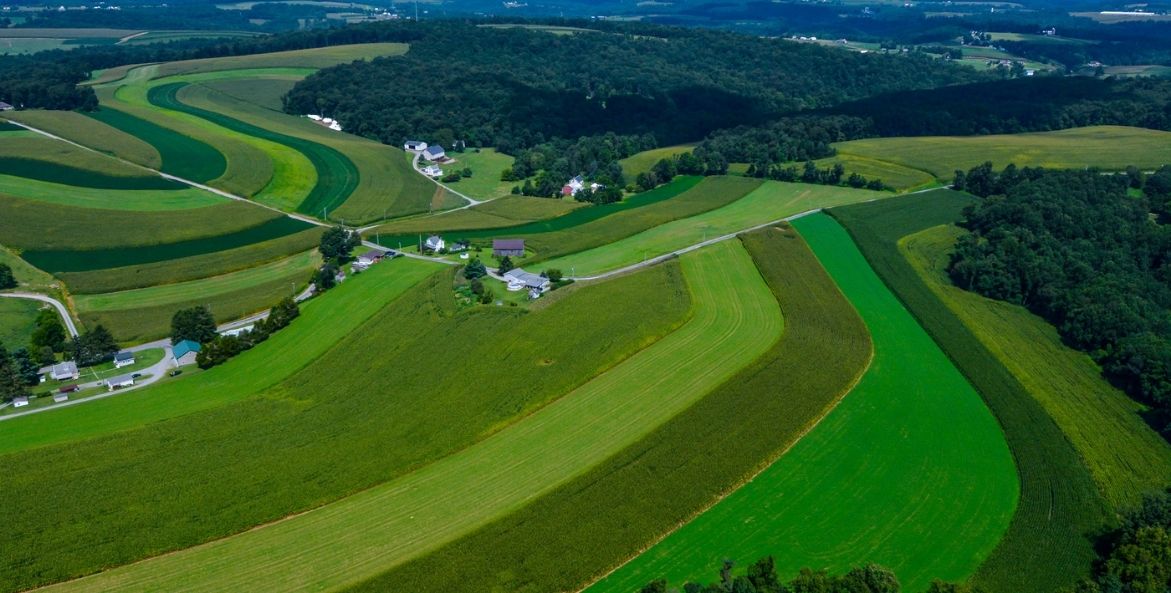The following was first published in the Bay Journal.
The best strategy to meet the Chesapeake Clean Water Blueprint's clean water pollution limits by 2025 is to focus on farms. More financial and technical support for farmers to implement conservation practices will not only improve water quality, but also reduce greenhouse gasses and bolster the watershed's resilience to climate change.
Collectively, the Bay states, and especially Pennsylvania, are behind schedule to meet their Blueprint targets. These targets outline the reductions in nitrogen, phosphorus, and sediment pollution needed to remove the Chesapeake Bay from the federal "dirty waters" list. More than 80 percent of the remaining pollution reductions must come from agriculture.
A restored Bay is worth $130 billion annually in economic, public health, and environmental benefits. In Pennsylvania those benefits will approach $40 billion a year. How can we finish the job?
We know certain farming practices work both to reduce pollution and benefit farmers. Together, they form a type of farming called regenerative agriculture.
Regenerative agriculture is essentially a farm system designed to work in harmony with nature. It focuses on minimizing the physical, biological, and chemical disturbance of the soil; keeping the soil covered with vegetation or natural material as much as possible; increasing plant and crop diversity; keeping living roots in the soil; and integrating animals into the farm. For example, farmers may rotationally graze their livestock, plant forested buffers along streams, or plant diverse crop rotations and cover crops.
By improving soil health, regenerative farming practices increase the land's ability to filter and retain water and nutrients. In turn, polluted runoff decreases, benefiting water quality. Farmers benefit, too. Healthier soil can improve productivity, reduce the need for costly fertilizers, and make farms more resilient to droughts and floods. Many regenerative practices also capture and store carbon in the soil, helping to mitigate climate change and the extreme weather that harms both farmers and the Bay.
Getting more of these practices on the ground—in areas of the watershed where they will have the greatest effect—is key to reaching the Bay states' pollution reduction requirements by 2025.
Up-front costs and a shortage of technical experts to assist with implementation can create barriers for many farmers who want to adopt regenerative practices. While some Bay states and the federal government offer cost-share programs and assistance, historical funding levels are not near enough to meet the need.
In Pennsylvania alone, the agricultural funding need between now and 2025 is roughly $3 billion, and data indicate the state isn't getting its fair share of federal conservation dollars. A 2017 report by the U.S. Governmental Accountability Office (GAO) suggested Pennsylvania is shortchanged roughly $20 million each year by the Environmental Quality Incentives Program (EQIP)—a key cost-sharing program for conservation practices—because the money is allocated based more on historical funding amounts than conservation needs. In addition, unlike states like Virginia and Maryland, Pennsylvania does not have a state agricultural cost-share program to help its farmers.
Federal lawmakers could help close the gap by adopting bipartisan solutions, including the Billion for the Bay Initiative and legislation such as Rep. Abigail Spanberger's Climate Stewardship Act.
Recently proposed to Congressional leadership by the governors of the six Chesapeake Bay states, the mayor of Washington, D.C., and the chair of the Chesapeake Bay Commission the Billion for the Bay proposal would provide a new infusion of funding necessary to meet the 2025 Chesapeake Clean Water Blueprint.
The Climate Stewardship Act would provide tens of billions of dollars in investment in the U.S. Department of Agriculture's working lands conservation programs with funding directed toward climate stewardship practices.
Congress should adopt both initiatives.
The Chesapeake Bay Foundation believes that Congress should support the Billion for the Bay and target the majority of the funding to additional technical and financial resources to basins within the watershed where regenerative farming practices are most effective at improving water quality—what the U.S. Environmental Protection Agency's Chesapeake Bay Program refers to as "most effective basins." Many of these basins are in Pennsylvania.
At the same time, the Pennsylvania legislature should pass the new Agricultural Conservation Assistance Program bill sponsored by Senator Yaw. This legislation would complement these additional federal resources by expanding on-farm conservation measures throughout Pennsylvania, including high priority areas like the Chesapeake watershed.
There is little time left to meet the 2025 Chesapeake Clean Water Blueprint targets. Immediate action to get more financial and technical assistance to farmers for regenerative agriculture is the fastest, most efficient way we can make progress.
—Denise Stranko, Federal Executive Director, CBF



